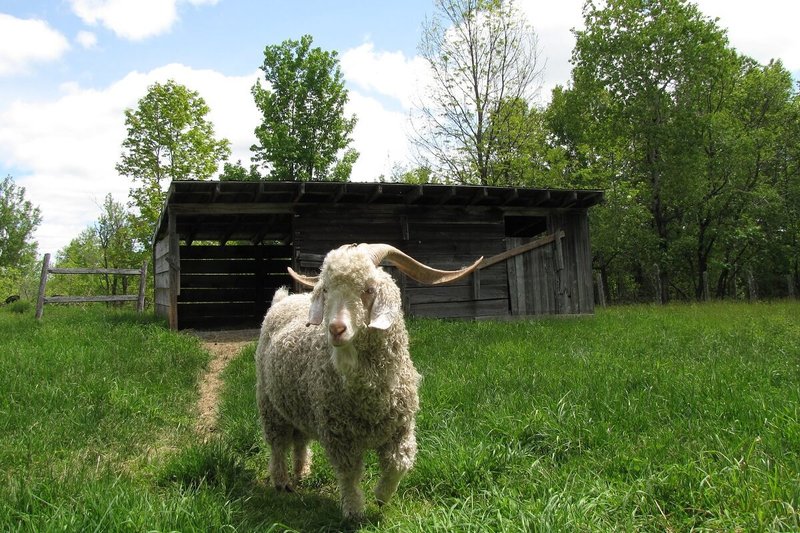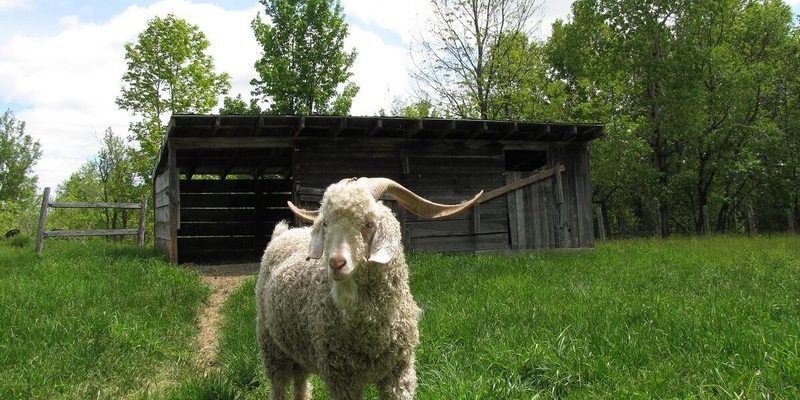
Think of your goat’s housing and fencing like the foundation of a house. Just like we need a solid roof over our heads, Angora goats need shelter that protects them from the elements. On the flip side, fencing keeps them contained and safe from potential predators. Both elements play a crucial role in your goats’ health and overall happiness. So, let’s dig into the details to ensure your furry friends have everything they need!
Why Proper Housing is Essential for Angora Goats
You might be wondering why the housing situation is such a big deal for Angora goats. Well, these goats, known for their unique wool, are quite sensitive to weather changes. Imagine being outside in a rainstorm without a coat—it’s not pleasant! Providing adequate shelter helps protect them from harsh weather conditions, whether it’s hot summer sun or chilling winter winds.
A good shelter will also serve as a cozy spot for your goats to rest and sleep. Goats need a clean, dry place to lie down, preferably off the ground. Moisture can lead to health issues like hoof rot and respiratory problems. Take time to construct or set up a housing space that’s draft-free but well-ventilated, keeping in mind that goats like to stick together. An ideal space should accommodate the herd comfortably, allowing them to snuggle up without feeling cramped.
Types of Housing for Angora Goats
When it comes to housing, you have several options depending on your budget and space. Let’s break down some common types of goat shelters.
- Simple Shed: This is the most basic option. A three-sided shed provides good protection from wind and rain while keeping your goats comfortable. Just make sure it’s tall enough for them to stand without hitting their heads.
- Farm Barn: If you have the resources, a barn offers ample space for multiple goats. You can include separate areas for feeding, resting, and even a pen for kids (young goats). Plus, a barn can double as storage for feed and equipment.
- Portable Shelters: If you move your goats around for grazing, consider a portable shelter. These structures can be moved to different pastures, allowing your goats constant access to fresh grass while still having a protected area.
Each option comes with its pros and cons, so think about your specific situation and choose what fits your needs best.
Essential Features of Goat Housing
Now that you have some ideas for what type of housing to build or buy, let’s discuss the must-have features.
First, size matters. Ideally, you want to provide at least 10–15 square feet per goat inside the shelter. This space allows them to move around comfortably, reducing stress and promoting good health.
Next, ensure that the shelter is elevated off the ground. A raised floor helps prevent moisture build-up, which can attract pests and lead to health issues. Make sure the roof is weather-resistant, too—something like metal or treated wood can withstand the elements much better than other materials.
Finally, don’t forget about ventilation. Good airflow keeps the air fresh and prevents the buildup of odors and harmful bacteria. Consider installing windows or vents that you can open on warmer days.
Understanding Fencing Needs for Angora Goats
So, you’ve got a comfy home for your Angora goats—now what about keeping them safe and sound? That’s where fencing comes into play. You might think that any fence will do, but goats are quite the escape artists. They have a knack for squeezing through tight spaces and jumping over short barriers if they’re not securely enclosed.
Start by considering the type of fence that will suit your needs. Options include woven wire, electric fencing, or stock fencing. Each has its benefits but make sure you pick one that’s tall enough (at least 4–5 feet) and that’s sturdy. If you choose electric fencing, ensure that it’s well-maintained and regularly checked for functionality.
Height and Strength of Fencing
Why is height so important? Goats are natural climbers and jumpers. If they see something they want on the other side of the fence, there’s a good chance they’ll try to get to it. A fence that’s 4–5 feet high is ideal to prevent them from jumping over. Also, be sure that the gates are equally secure, with latches that can’t easily be opened by curious goats.
Furthermore, the strength of your fencing material should be a top consideration. If you live in an area with predators like coyotes or stray dogs, opt for a stronger material that can withstand attacks. Some goat owners choose to double-fence or use barbed wire at the top for added security.
Fencing Maintenance and Safety Tips
Keeping your fencing in good shape is just as important as the initial installation. Regularly check for any sagging sections, rust, or loose nails that could create weak points in your fencing. Here are some quick tips to keep your fencing safe:
- Inspect Monthly: Walk your fence line at least once a month to identify any potential issues before they become significant problems.
- Repair Immediately: If you notice any damage, fix it as soon as possible. Even small holes can lead to your goats finding an escape route.
- Consider Predator Deterrents: In areas where predators are a concern, consider adding an electric wire along the bottom of your fencing. It can act as a strong deterrent to potential threats.
Taking these steps will ensure your goats stay safe and secure in their environment.
Creating a Comfortable Outdoor Space
While shelter is crucial, don’t overlook the importance of their outdoor space. Goats need room to roam, play, and graze. Ideally, you should have a fenced pasture where they can enjoy fresh air and exercise.
When designing their outdoor area, keep in mind the natural behavior of goats. They love to climb and explore, so including logs, rocks, or even a small hill can enrich their environment. You might debate whether to add shelters or shade structures in the pasture, and honestly, it’s a solid idea. Providing shaded spots during hot days helps your goats remain cool and comfortable.
Also, think about the forage quality of your pasture. Angora goats thrive on a mixed diet that includes grass, shrubs, and other plants. Regularly rotating your goats between different grazing areas can help prevent overgrazing and keep your pastures healthy.
Final Thoughts: Building a Happy Home for Your Angora Goats
Creating the right housing and fencing for your Angora goats may seem like a lot of work upfront, but it’s totally worth it. By investing the time and resources, you’ll set up a space that not only keeps your goats safe but also promotes their health and happiness. Whether you’re building a barn or choosing the right fencing material, remember that a little planning goes a long way.
Once you have the essentials down, you can relax and enjoy watching your Angora goats thrive in their cozy, secure environment. They’ll reward your efforts with their playful antics and, of course, that stunning mohair that makes them so special. So, roll up your sleeves, get to work, and soon you’ll have a beautiful space for your furry friends!

